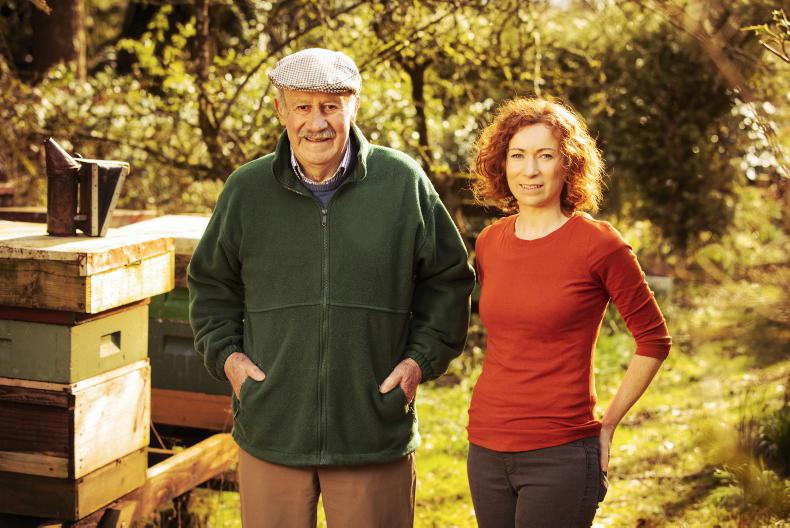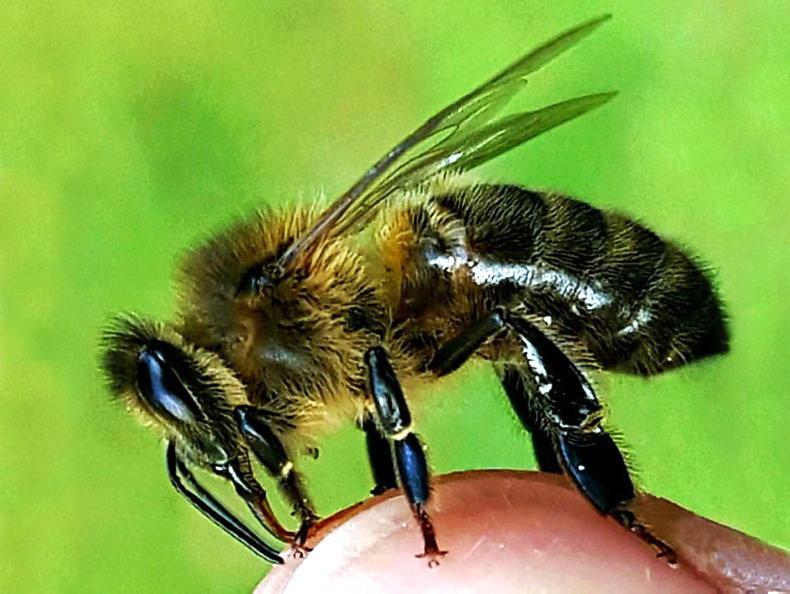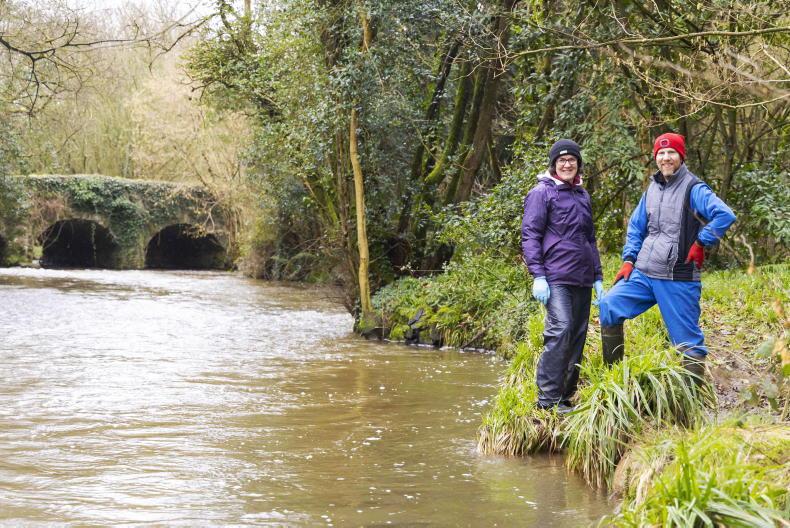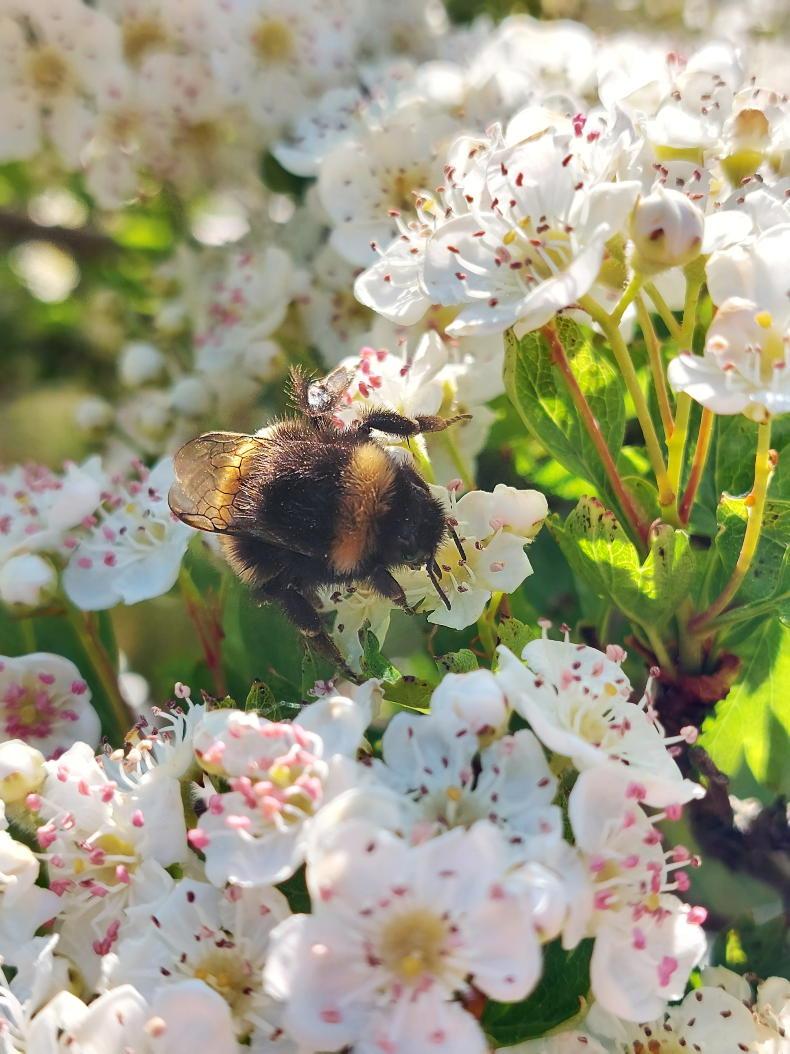There are 98 wild bee species in Ireland, made up of one honeybee species, 21 bumblebee species and 77 solitary bee species. However, according to data from the Department of Agriculture, one-third of these species are threatened with extinction. Some of the measures introduced to combat this decline are included in the Department’s Protecting Farmland Pollinators European Innovation Partnership, as well as the funding of a Farmland Pollinator Officer.
Together with all wild pollinators, bees play a major role in maintaining biodiversity, ensuring plant survival and forest regeneration and promoting sustainability.
Bees and pollinators are particularly active in May, as seen here on Tullamore Farm. The holes in the bank of clay are where they have been sheltering.
Bees are very active in May as nectar collection is in full swing, which results in an intense growth in the hive.
What can farmers do to protect bees and pollinators on their farms?
There are plenty of measures farmers can undertake to improve pollinator habitats on their farms. Some bee friendly farming measures include maintaining native flowering hedgerows, allowing wildflowers to grow around the farm, providing nesting spaces for wild bees, minimising artificial fertiliser use and reducing pesticide use.
One nesting space for wild bees could be in bare clay, like in the video above. Simply scraping some of the greenery from a bank will provide a habitat for ground-nesting bees.










SHARING OPTIONS